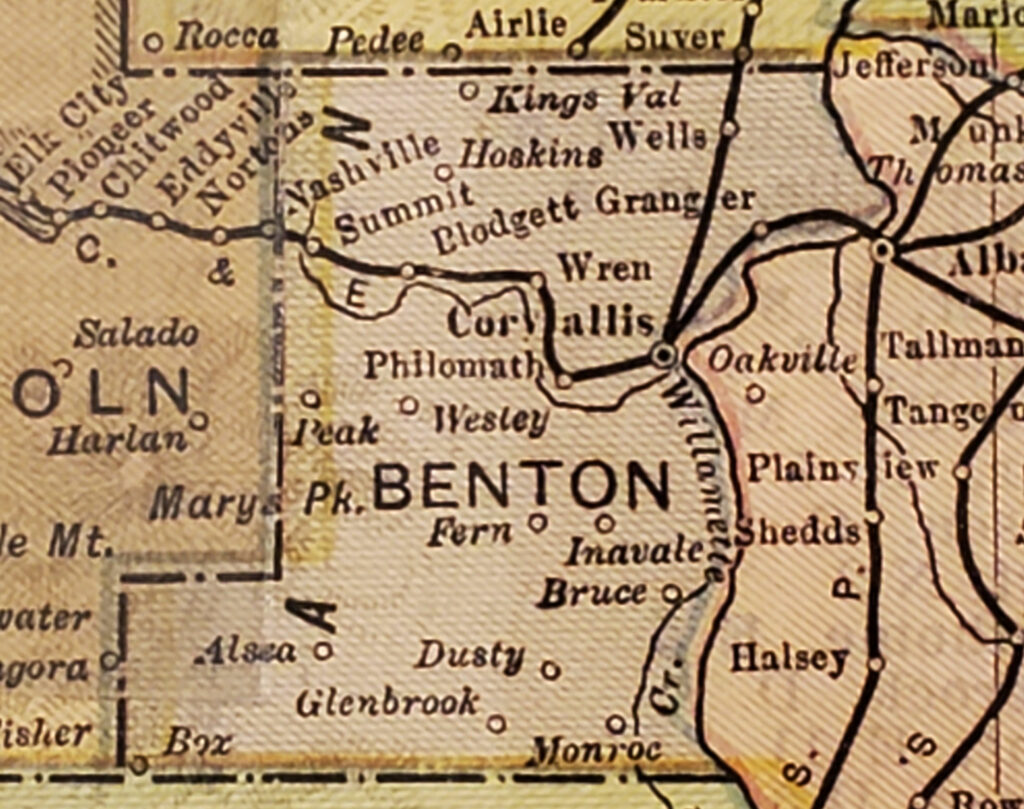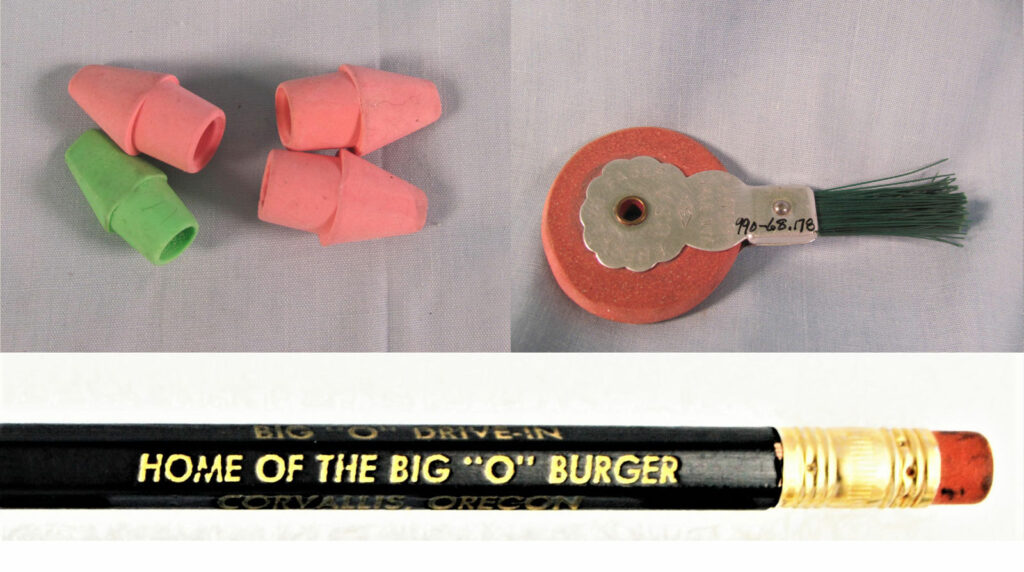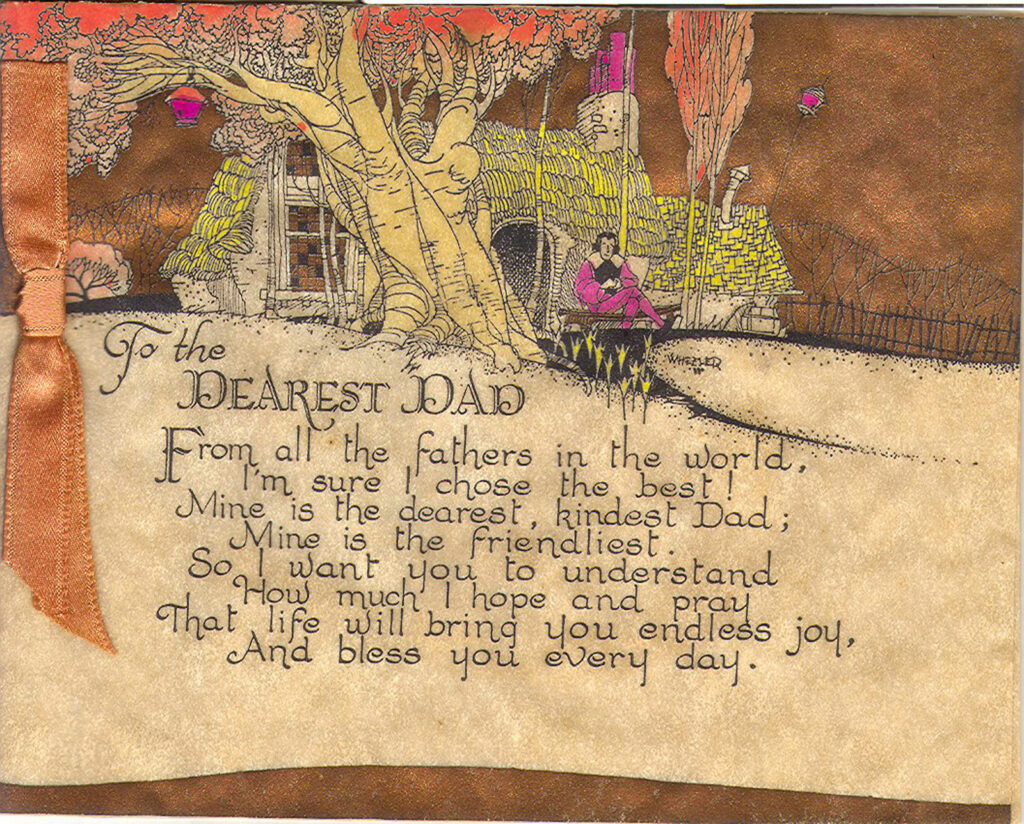In the “Water Works” exhibit at the Philomath Museum, one display contains taxidermy specimens of some animals that live in bodies of water. The wood duck is included as a representative of water birds. But there are many other types of ducks that live in this area. Birds of the Willamette Valley Region by Harry Nehls, Tom Aversa, and Hal Opperman lists 15 other types of ducks. The museum’s collection also includes specimens of the following Willamette Valley ducks.
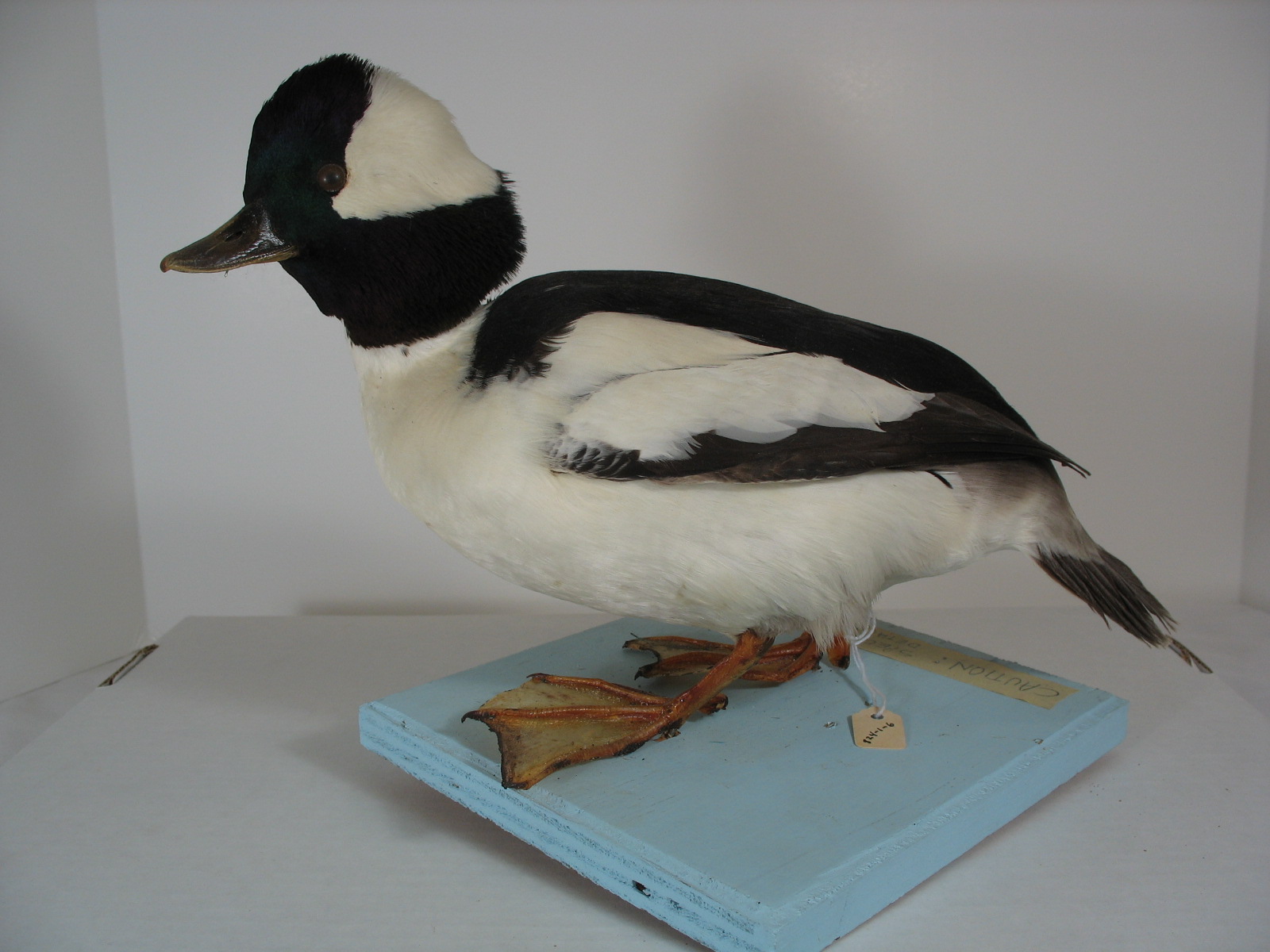


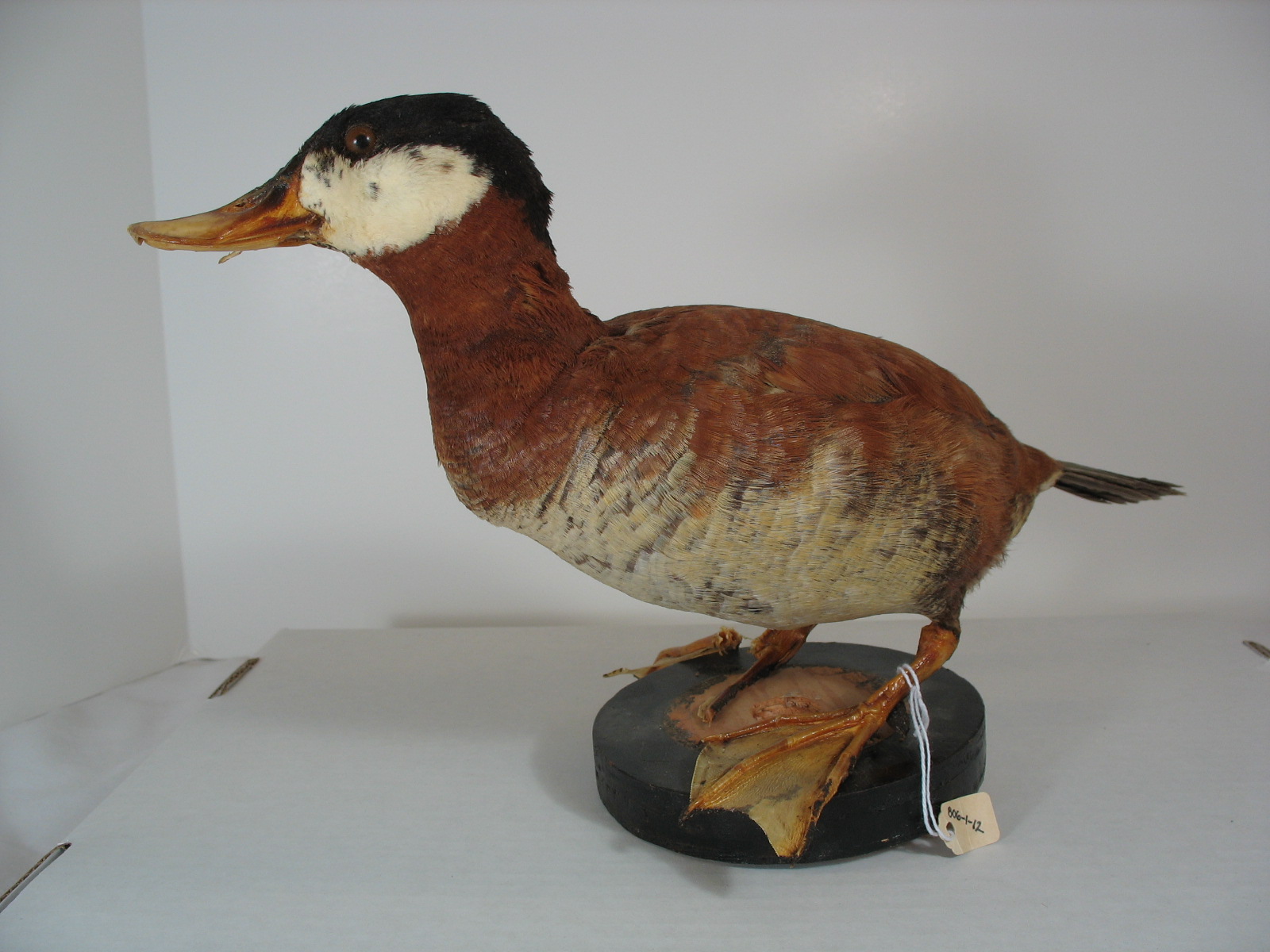
All are swimming birds with webs between their three front toes, a broad flat bill with a hook of hard tissue at the end, and dense plumage with thick down. Of the four ducks pictured here, the bufflehead is generally the smallest (13 inches) while the wigeon is the largest (19 inches). Most are winter residents: arriving in late summer or early fall and departing by May, although some mergansers might be found in the summer.
Diets vary, although all find food in the water. The wigeon and the ruddy duck feed on aquatic plants. The wigeon skims the surface of the water for food while the ruddy duck will dive to find something tasty. Insects make up the majority of the diets of the bufflehead and the hooded merganser; the merganser also eats fish. Both ducks will dive under water in pursuit of food.
When threatened, some will hide in the water instead of flying away. The ruddy duck will dive down under the water; the merganser will sink until its back is level with the water.
Their coloring and some habits of these four ducks may vary but all depend on on the water and rely on a watery habitat– a pond, a marsh or a slough. The ruddy duck can’t even walk upright on land.

